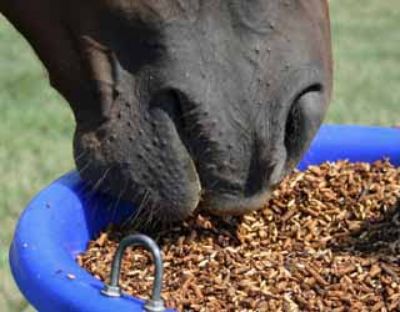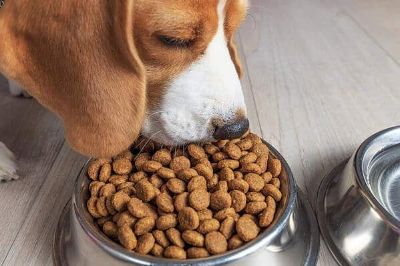
Most of us put a lot of trust in pet food manufacturers, particularly when we are dishing out a lot of money on ‘premium’ dog foods. But do you really know what you are feeding your dog? Do you read and fully understand the labelling on commercial dog foods you give to your pet?
There’s a few important tricks of the dog food trade that can make it challenging to figure out exactly what you are feeding to your dog. So here’s my guide to helping you decipher pet food labels to make that all important decision on behalf of your four legged friend.
Pet food regulation in Australia
So who sets the standards of commercial pet foods in Australia? Well, the pet food industry is pretty much self-regulated with voluntary industry standards set by the Pet Food Industry Association of Australia (PFIAA). The Australian Standard for the Manufacturing and Marketing of Pet Food (AS 5812–2011) provides the guidelines for pet food manufacturers in Australia.
When it comes to labelling and claims of nutritional adequacy of pet foods, the Australian standards advocate manufacturers use a national guideline such as the Association of American Feed Control Officials (AAFCO), which set the minimum and maximum nutrients profiles required in pet foods for different life stages (growth, maintenance, all life stages etc).
So if the pet foods you purchase states it is ‘formulated to meet the nutritional levels established by the AAFCO Food Nutrient Profiles’, or it has been tested using the AAFCO Feeding Trial Protocol, you can at least have some assurance it is likely to meet minimal nutritional needs for your dog. I say likely for a couple of reasons…..
- AAFCO standards do not cover the quality of food your dog is eating. All heat processed pet foods must have supplemental nutrients added to them after processing to meet the AAFCO minimums, as any that were actually in the original ingredients would be all but obliterated in high heat treatments; and
- AAFCO food trials focus on whether it sustains the animal properly for its life stage, rather than whether it is great for its total long-term wellbeing. For puppies the trials are for 10 weeks and for adults 6 months. The actual effects of foods on the body can take years to show their impacts on your dog’s health.
Bottom line – AAFCO standards at least give assurances of some basic nutrient requirements being met, albeit probably through some supplementation to the main ingredients (which is better than a low quality food that isn’t compliant), but don’t rely on it as the basis for determining the quality, digestabilibty and long term benefits to your dog.
Ingredient list
Let’s start with the ingredient list. Most people know that on any food label, ingredients are listed in quantity order, that is, the most abundant ingredient is listed first through to the least.
But, there’s some important things to know about pet food labelling regulations that can make that simple task a little more challenging, particularly if you are trying to give your dog a quality, mainly meat based ‘complete and balanced’ meal.
In many dry foods for example, the ingredient list is based on weight BEFORE processing. Once the moisture is removed, this can drastically change the actual proportion of ingredients, particularly when it comes to meat and grain.
You also need to watch for label ‘splitting’, where similar ingredients are listed into various components to make it seem like it is less than the meat source. Grain may actually be 40% of the total ingredient list and meat only 20%. But by listing the grain as different constituents like , corn meal, (10%), corn flour (10%), rice (10%), rice bran (10%) it will mean the meat ingredient can be listed first as the highest proportion.
Bottom line – don’t rely on the order of ingredients on the label as an indicator of the proportion of ingredients in your pet food!
Packaging and labels at face value
So you pick up a bag of ‘Happy Fido’s Big Beef Dinner’ (yes, a made up brand to protect the innocent!) and think that you are giving your dog a wholesome dry food packed with beef? Well if the manufacturer is being literal with that label, you just might be. But according to the PFIAA guidelines, the beef component only needs to be at least 25% of the meat component of the food, but not the major meat. If you see Happy Fido’s range ‘with Beef and Lamb’, beef and lamb only need to be 5% each of the total meat component. These words to describe ingredients on the packets are carefully selected and will not necessarily align with your own interpretation.
Words like ‘all natural’, ‘premium’, ‘gourmet’ also have no official definition so in effect are meaningless descriptors of the quality of food you are purchasing. They are however, very effective marketing tactics designed to appeal to your sense of giving your dog “the best”.
What if you see claims like ‘veterinary recommended’ or ‘approved’ ? AAFCO states that a food can be ‘recommended’ if the manufacturer can establish a ‘statistically sound number’ (already open to wide interpretation!) of veterinarians who have recommend the food. They are not permitted to put veterinary ‘approved’ though, as veterinarians do not approve food guidelines. But it only take one veterinarian’s endorsement for a manufacturer to make the claim ‘veterinary formulated or developed’. If the veterinarian happens to be a genuine expert in dog nutrition (that is someone who has studied above and beyond the very brief and basic nutritional training they receive as part of their core studies), then it could be a good thing, but that is not necessarily the case.
Bottom line – don’t rely on the marketing hype (or even price) to be an indicator of the quality or contents of food you are purchasing. Understanding the ins and outs of that nutritional label is a much better guideline about what you are feeding.
So what’s the ‘Guaranteed Analysis’ mean?
Guaranteed analysis basically tells you the minimum amount of crude protein, fats and moisture (and sometimes ash) contained in the pet food. So what does ‘crude’ actually mean and what the bleep has ash got to do with my dog food you may ask!
“Crude” essentially refers to the measurable amount of any protein or fat in a food. It can be a very misleading term, as it would be easy to assume that a good level of ‘crude protein’ must be top notch food packed with meat. Well, many types of living matter contain proteins (including grains); crude protein tells you nothing about the quality of the food or its digestibility.
Crude protein is actually measured by determining how much nitrogen is present in a sample of food. Crude fat is determined by using solvents to determine the amount of soluble fat material in a sample. AAFCO recommend dog foods have a minimum of:
- 22.5 % Crude Protein for Growth and 18% Crude Protein for Maintenance
- 8.5% Crude Fat for Growth and 5.5% Crude Fat for Maintenance
‘Ash’ on labels refers to what is left over from food that has been completely incinerated – essentially it is an indication of the sum of the mineral components of the food such as calcium and phosphorous. The average is between 5-8%.
These crude percentages are based on a “Dry Food Matter” basis. What on earth am I talking about now you ask! How much more complicated is this labelling thing going to get!
Yes at this stage I can appreciate it gets a bit overwhelming. But stick with me…..your dog is depending on you to understand this stuff and make the right choices for him!
Bottom line – crude proteins and fats tell you whether a food meets the minimum standards set by AAFCO, but little about the quality of those nutrients in the food. It can also be challenging when comparing proteins and fats in different types of foods (wet vs dry for example). A more reliable indicator is the description of the ingredients and working out the dry food matter analysis to better compare different types of food.
Calculating Dry Food Matter
To work out dry food matter, you need the moisture content of the food, which should be on all pet food labels. The formula for working out Dry Food Matter is:
100% – %Moisture = %Dry Matter (DM) then we take that DM figure to work out a comparative of percentage protein or fat.
%Protein / %DM = %Protein on a DM basis or %Fat / %DM = %Fat on a DM basis
Check out the guaranteed analysis of these two foods – on face value you’d think the dry kibble is a better choice because it has a higher protein content. But the other food is a canned wet food, which has much higher moisture content and can distort the crude protein and fat figures.
Dry Food (Guaranteed Analysis)
After DM basis calculation
Wet Food
(Guaranteed Analysis)
After DM basis calculation
Protein
20%
23% (20 / 85)
11%
44% (11 / 25)
Fat
9%
11% (9 / 85)
7%
28% (7 / 25)
Moisture
15%
75%
Dry Matter
100 – 15% = DM85%
100 – 70% = DM25%
But after the calculation taking into consideration the different moisture contents, you are now comparing the old apples with apples and it is apparent the wet food is much higher in both protein and fat compared to the dry.
So does that mean the wet is better than the dry? Well, both meet the minimum AAFCO standard. And a higher fat content is not necessary something to fear; fats are crucial to your dog’s diet. But again, you need to check the actual ingredient contents to get a better idea of the source of those proteins and fats.
Bottom line – make sure the guaranteed analysis meets at least AAFCO standards and if possible, work out the protein and fat content based on Dry Matter Basis to get a better indication and comparison of nutrient profiles in different foods.
Deciphering ingredients
The pet food industry has some very interesting ways of describing some ingredients. Here’s a list of common ones and how they are defined by the guidelines:
Meat:
“clean flesh derived from slaughtered mammals and is limited to that part of the striate muscle which is skeletal or that part which is found in the tongue, in the diaphragm, in the heart or in the esophagus; with or without the accompanying and overlying fat and portions of the skin, sinew, nerve, and blood vessels which normally accompany the flesh” (AFFCO definition).
Meat meal:
“the rendered product from mammal tissues, exclusive of any added blood, hair, hoof, horn, hide trimmings, manure, stomach and rumen contents except in such amounts as may occur unavoidably in good processing practices” (AFFCO definition).
Meat by-products:
“the non-rendered, clean parts, other than meat, derived from slaughtered mammals. It includes, but is not limited to, lungs, spleen, kidneys, brain, livers, blood, bone, partially de-fatted low temperature fatty tissue, and stomachs and intestines freed of their contents. It does not include hair, horns, teeth and hoofs” (AFFCO definition).
Anything with the word “derivative” in it
Variations include ‘derivative of vegetable origin’, ‘animal derivatives’, ‘ – or any combination of these. It is very vague and sounds obscure, but it could well be referring to a perfectly healthy ingredient. But its vagueness is open to quite loose interpretations as well and could be describing any number of not so desirable ingredients.
My observations suggest that manufacturers who put more meaningful information on their packaging about the nutritional value of their product, and those that use much more specific and literal terms and descriptions for the ingredients and how they are processed is usually a pretty good indicator of a higher quality food. These are people who are proud of their product and want to be as transparent as possible about it.
Bottom line – the more vague the reference to the ingredient, the more likely it is to be low quality. When looking for meat ingredients, you are better off if the protein source is actually listed – like “lamb”, “beef by-products” or “chicken meal” rather than the generic “meat meal”, or “meat byproducts”.
Additives
This is a whole blog topic in itself! Needless to say, be alert to all the additives used to either preserve, colour or flavour your dog’s food. They should be listed on the ingredient list, but could possibly be obfuscated with some daunting chemical nomenclature. And you can’t assume that because you may not be familiar with the name it is necessarily something to avoid. For example, if you saw ethoxyquin and l-lysine on a label you might think both are “chemical sounding” names and perhaps should be avoided, but one is actually a synthetic preservative (also used in pesticides to keep mold away by the way), and the other is a very important amino acid required in the diet. I’ll leave it to you to research which is which if you don’t know!
Bottom line – understand the definitions of pet food ingredients and be alert to anything that sounds further and further away from what sounds like whole, real quality food. If you’re perusing the shelves for a new dog food, take the time to look up what unfamiliar additives are on your smartphone to help make the decision whether it something you want to give to your dog.
What the label may not tell you – irradiated food
Due to Australia’s stringent custom regulations (which do keep us protected from a range of potential diseases and infestations), meat products entering the country often have to go through some extensive additional heat or radiation treatment if they cannot demonstrate adequate processing. While guidelines stipulate that irradiated food has not been determined as harmful to dogs (as yet!), the practice was banned for cat foods in 2009 due to a number becoming paralysed or dying. The irradiation changed the nutrient profile of the food. Pet food guidelines in Australia require that irradiated dog foods must state this on the packaging, and must also indicate that it is not to be fed to cats. But if you live in a multi-pet household can you guarantee your cat won’t sneak in a bit of your dog’s irradiated kibble?
Bottom line on from my perspective – if it has caused problems for cats, and there is still not adequate research on the longer term implications for dogs, I would not be taking the risk to my dogs’ longer term health by serving them up irradiated foods.
There is much much more in this ever so fascinating world of pet food labelling and practices, which I will cover in future blogs. But for now, I hope you are a little the wiser to the tricks and trade secrets of dog food labelling and are in a much better position to make some informed choices on behalf of your dog in this interest of her long term health and wellbeing.

































































